News Bytes
North Carolina City To Replace Light Bulbs with LEDs
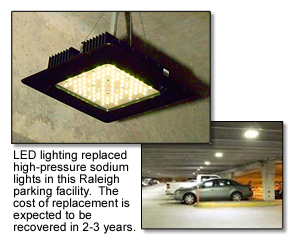
Raleigh, North Carolina, is on-track to become the nation's first city to install light-emitting diodes in all of its street lights, stop lights and public buildings according to Greenwire. Raleigh officials expect the "LED City" project to cut electricity costs up to 40 percent and create an energy-efficient road map for others.
Light-emitting diodes, or LEDs, consist of semiconducting chips that transform electricity into a white light. LEDs use considerably less heat — and therefore less electricity — than yellow-hued incandescent and florescent bulbs, according the U.S. Department of Energy. LEDs do not burn out, they just get dimmer over time.

LEDs constitute less than 1 percent of all installed lighting in the United States today, but LEDs are projected to comprise almost a third of the market by 2020.
The city has historically spent about $7.7 million annually to power the incandescent bulbs in its buildings, garage, street lights and traffic signals, said city spokeswoman Jayne Kirkpatrick. If the city were able to cut its energy consumption in all of its lights by 40 percent, the effort would save more than $3 million a year.
Australia Seeks to Become First Nation to Ban Incandescent Light Bulbs
Australia announced plans in March 2007 to phase out the use of incandescent light bulbs by 2010. Environment Minister Malcolm Turnbull said the plan is expected to reduce Australia's greenhouse gas emissions by 4 million metric tons per year by 2015.
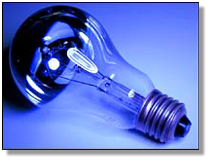
Turnbull said that if the whole world were to discontinue using incandescent bulbs it would save the equivalent of five times Australia's entire annual energy consumption.
While Australia is the first country in the world to have a nationwide phase-out of the archaic bulbs, it is not the first governing body to make such a proposal. Earlier this month, California state Assemblyman Lloyd Levine's introduced a bill that would prohibit the sale of incandescent light bulbs between 20 and 150 watts by 2012, forcing customers to use cost- and energy-efficient fluorescent light bulbs.
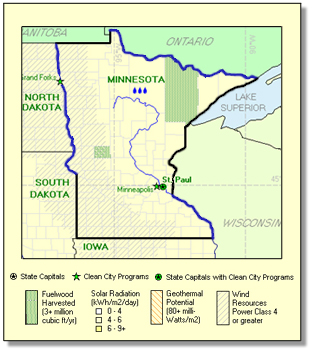 Minnesota Adopts Green Power Goal, Joins 22 States
Minnesota Adopts Green Power Goal, Joins 22 StatesIn February 2007, Minnesota adopted the most aggressive requirement for power generation in the United States, becoming the 23rd of the 50 US states to set targets for power from renewable sources. Minnesota Gov. Tim Pawlenty signed a bill to require that 25 percent of the state's electricity come from renewable sources such as solar, wind and biomass power by 2025.
In 2005, U.S. renewable energy from geothermal, wind, solar and biomass power accounted for about 2.3 percent of overall electricity used, with hydroelectricity accounting for another 6.5 percent, according to the federal Energy Information Administration.
In Minnesota and nationally, including Nebraska, coal-fired power plants provide about half the electricity. In Minnesota, about 5,000 megawatts of energy from renewable sources would be added, about eight times more than currently comes from renewables in the state.
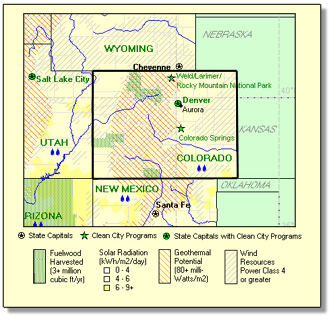 New Colorado Law Calls for Municipal Green Power Options
New Colorado Law Calls for Municipal Green Power Options On March 27, 2007, Colorado Gov. Bill Ritter signed House Bill 1281 into law, which doubles the state's renewable energy portfolio standard — frequently call RPS — and requires municipal utilities to offer an optional pricing program that allows retail customers to support emerging renewable energy technologies through utility rates. The RPS requires investor-owned utilities to obtain 20 percent of their electricity supplies from renewable sources by 2020 and sets a 10 percent renewable energy goal for the state's municipal and rural electric cooperatives.
A study found HB 1281 would provide significant economic benefits, particularly to rural Colorado, by:
- Increasing Colorado’s share of the GDP by $1.9 billion through 2020.
- Increasing total wages paid to workers by $570 million.
- Increasing the workforce by 4,100 person-years of employment.
- Providing farmers, ranchers and other landowners with $50 million in lease payments for wind farms, crops and solar parks.
- Generating $400 million in property tax revenue through 2020 to fund education and other services, particularly in rural Colorado.
U.S. Alternate Fuel Vehicles Set Sales Record
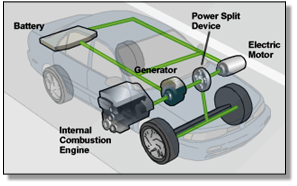 U.S. auto dealers sold a record 1.5 million alternative fuel vehicles last year, beating automakers' sales expectations by 50 percent.
The total number of hybrid gas-electric, ethanol, biodiesel and other alternative fuel vehicles to 10.5 million, according to a March 2007 report by R.L. Polk that was commissioned by the Alliance of Automobile Manufacturers.
U.S. auto dealers sold a record 1.5 million alternative fuel vehicles last year, beating automakers' sales expectations by 50 percent.
The total number of hybrid gas-electric, ethanol, biodiesel and other alternative fuel vehicles to 10.5 million, according to a March 2007 report by R.L. Polk that was commissioned by the Alliance of Automobile Manufacturers.The nation's car manufacturers are offering consumers 60 models of alternative fuel vehicles, up from just 12 models in 2000. The 10.5 million alternative fuel vehicles reported by Polk represents about 4 percent of the 240 million vehicles on the nation's roads.